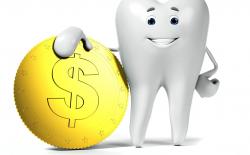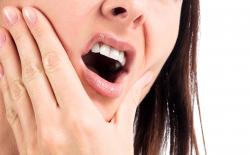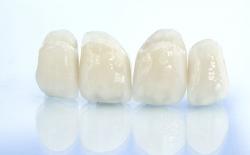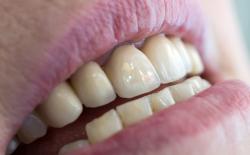How is a temporary crown prepared?
A temporary dental crown is prepared by the dental assistant or hygienist.
These are the steps required to prepare a temporary dental crown:
- Firstly, it is of utmost importance that an imprint of the readied tooth and contrasting teeth is finished.
- Using this imprint, a sticking plaster mold is made ready.
- The temporary dental crown is constructed out of the chemical-cure composition from the sticky plaster mold. Some practitioners carry out the previously constructed aluminum dental temporary crowns.
- After the crown has been prepared, it is paved onto the tooth with lenient, effortlessly detachable cement.
- The patient is then asked to nibble on the temporary crown to make the cement hold in its place.
- Surplus cement is detached by the support staff.
- The tooth after being crowned prevents the air and bacteria from getting into the unprotected bare nerves and thus causing no pains to the bare nerves.
- While the patient is wearing a temporary dental crown, the doctor advises stopping flossing around the fresh temporary crown. They are further asked to brush as gently as possible and to avoid chewing gums and foods that are hard and sticky in nature.
A short but useful video about what to expect after a crown treatment. Duration: 2:14.
Need a local dentist?
Why are we using temporary crowns?
The main purpose of a temporary crown is to produce a tooth structure that aims to protect the tooth and targets the prevention of injury to gums and mask the equipped tooth until the permanent restoration is done by the lab.
A temporary crown is typically concreted in the desired place with easy-going provisional dental cement, for example, Temp-Bond NE. This permits relaxed elimination when the permanent restoration is taking place.
Another important function of temporary crowns is to prevent shifting/drifting of the adjacent and opposing teeth.
Removing a certain amount of your tooth - like trimming, which happens when a tooth is prepared for a dental crown - opens up some extra space for the adjacent and opposing teeth, which might move/shift to occupy that extra space, this is called overeruption or supraeruption.
The movement of neighboring teeth will prevent your permanent crown from fitting perfectly. The temporary crown makes sure the positions of your other teeth don't change and the permanent crown will fit as expected.
What to do if your temporary dental crown falls out?
It is common for temporary crowns to get dislocated even before the 5-15 days the lab finishes your permanent crown.
Actually this happens quite often and you shouldn't worry about it, but you need to put the crown back as soon as possible.
If the dentist is unavailable, you can try to set it back by smearing Vaseline or the toothpaste on the insides of the provisional crown and setting it back on the tooth. Biting down the crown is the next step.
You should also let your dentist know that your temporary crown has fallen out, the doctor will decide if an appointment is required to make sure the temporary crown fits well.
This short video shows you what to do if your temporary crown fell out. Duration: 1:44.
How much does a temporary crown cost?
Usually, the cost involved in the temporary dental crown is counted in the entire price of placing a permanent crown.
This is because it is a mere part of the entire process and is not counted separately.
The cost of a crown is usually around $1,000 - $1,500, but it can be significantly more depending on your location, the experience of the dentist, and any additional treatment you might need.
Need a local dentist?
Frequently asked questions
Can I eat with a temporary crown?
Yes, you can. But avoid hard and sticky foods as they could damage the crown or your crown might become loose or fall out. Eat with caution.
Should I brush and floss a temporary crown?
You should brush your temporary crown as your other teeth, maybe a bit more gently. You can also floss, but it's best to consult with your dentist as flossing might make your temporary crown loose.
My temporary crown fell out, what should I do?
Don't worry, this happens quite often. You can try to put it back, see the video above. Letting your dentist know about this is always a good idea, your doctor will decide if an appointment is required to check the crown.
I don't like the look of my temporary crown!
Temporary crowns are not as esthetic as permanent crowns. Ease of use and cost are the two main factors considered when preparing a temporary crown. Your permanent crown will be much more appealing.
How long can I wear a temporary crown?
A few weeks. They are designed to protect your tooth until the dental lab prepares your permanent crown. This happens usually anywhere between a few days and a few weeks.
Is it possible to get a crown without a temporary crown?
Getting a temporary crown is a required step of the traditional dental crown procedure.
It's possible to get a dental crown within a few hours, that procedure doesn't require a temporary crown. See our same-day CEREC crowns article if you're interested in this.
Need a local dentist?
You might also be interested in:
Dental Crown Pain
Secondary caries, infection, and loose crowns are some of the most common reasons for dental crown pain.
Zirconia Crowns
Nowadays zirconia crowns are often preferred over PFM crowns as they are more esthetic and require less tooth reduction.
E-max Crowns
E-max crowns are also very popular. Just like zirconia crowns, they look great, are durable, and not cheap...



